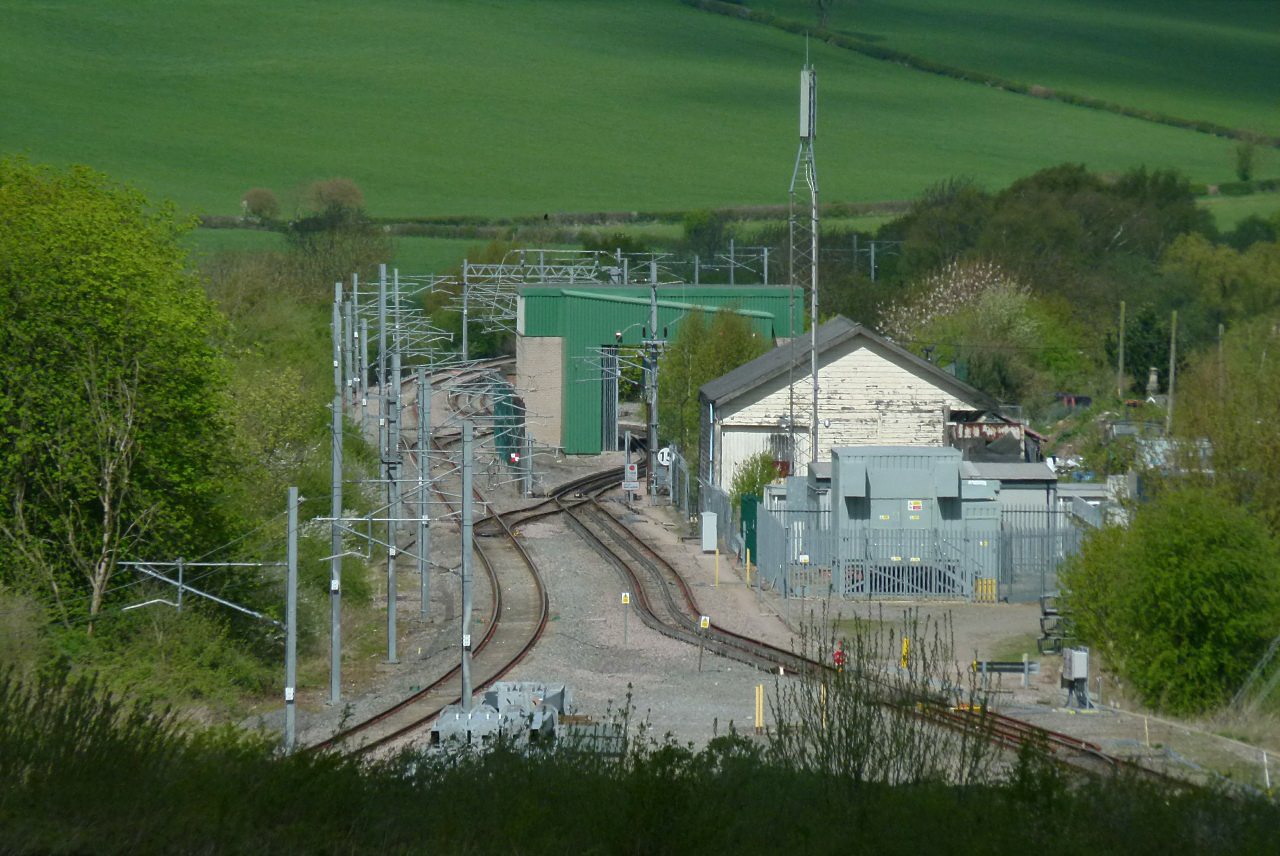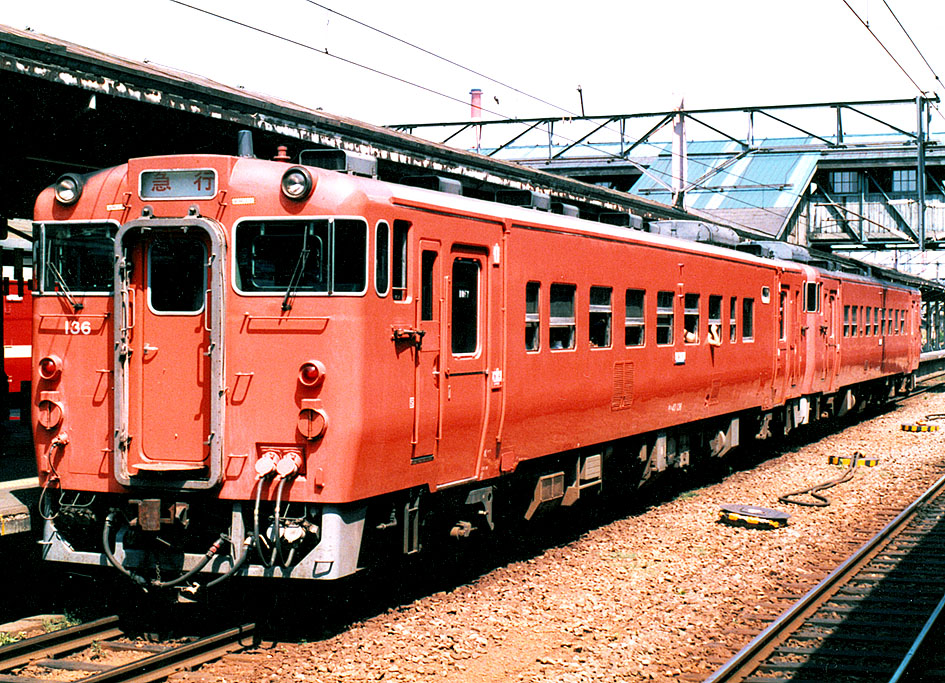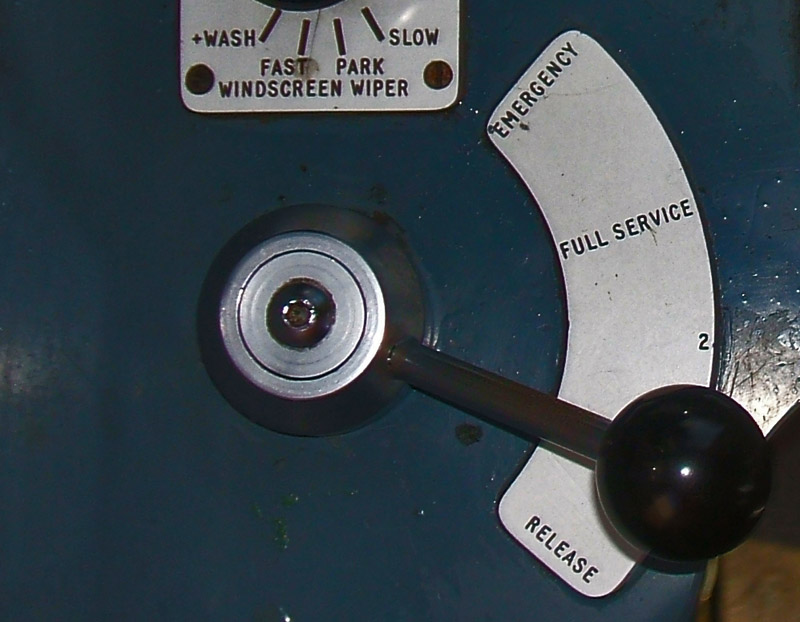|
British Rail Class 175
The British Rail Class 175 ''Coradia 1000'' is a type of diesel-hydraulic multiple unit (DHMU) passenger train from the Alstom Coradia 1000 family. The fleet of 27 sets was ordered from the French train manufacturer Alstom during July 1997 and were constructed between 1999 and 2001 at Washwood Heath, Birmingham. Early plans for some of the fleet to be capable of were in place but subsequently abandoned. Driver training and extensive testing of the new fleet was performed at the Old Dalby Test Track from November 1999. The first Class 175 entered revenue service with the train operating company First North Western on 20 June 2000. Ownership of the fleet is held by Angel Trains, who has leased the fleet to various train operators. The first operator of the Class 175, North Western Trains (later known as ''First North Western''), did not operate the fleet for long before Wales & Borders was created and inherited it. During December 2003, the new franchisee Arriva Trains ... [...More Info...] [...Related Items...] OR: [Wikipedia] [Google] [Baidu] |
Transport For Wales Rail
Transport for Wales Rail Limited, branded as Transport for Wales and TfW Rail ( and ), is a Welsh State-owned enterprises of the United Kingdom, publicly owned train operating company, a subsidiary of Transport for Wales (TfW), a Welsh Government-owned company. It commenced operations of the day to day services of the Wales & Borders franchise on 7 February 2021, as an operator of last resort, succeeding KeolisAmey Wales. Transport for Wales Rail manages 248 National Rail stations, including all 223 in Wales, and operates all passenger Transport in Wales#Railways, mainline services wholly within Wales, and services along the England–Wales border, many of which run into or through England. History During May 2018, the Wales & Borders franchise was awarded by Transport for Wales to KeolisAmey Wales. Operations commenced in October 2018; at this point, the franchise was scheduled to run for 15 years. Within two years, the franchisee had experienced a collapse in revenues and a ... [...More Info...] [...Related Items...] OR: [Wikipedia] [Google] [Baidu] |
Cummins UK
Cummins UK is a diesel engine manufacturer and the Cummins US distributor for the UK and Ireland. Cummins Inc. is a corporation of complementary business units that design, manufacture, distribute and service engines and related technologies, including fuel systems, controls, air handling, filtration, emission solutions and electrical power generation systems. Headquartered in Columbus, Indiana, (US) Cummins serves customers in approximately 190 countries and territories through a network of more than 500 company-owned and independent distributor locations and approximately 5,200 dealer locations. Cummins UK The first manufacturing facility outside of the United States was opened at Shotts in Scotland in 1956, it was known as Cummins Engine Company Ltd. Cummins occupied "the Wrens Nest" textile factory where diesel engines were manufactured. Taking advantage of the presence of a nearby Euclid earthmover plant, dependent on Cummins engines, they began building the NH series diesel ... [...More Info...] [...Related Items...] OR: [Wikipedia] [Google] [Baidu] |
Wales & Borders
Wales and Borders was a train operating company in the United Kingdom owned by National Express that operated the Wales & Borders franchise from October 2001 until December 2003. History In October 1996, the Valley Lines franchise commenced operating services around Cardiff and the South Wales Valleys. In August 2000, the Strategic Rail Authority decided to re-organise the Valley Lines and Wales & West franchises. Valley Lines became Wales & Borders from October 2001, being operated by National Express, combining its services with most of Wales & West's Welsh services and the Cambrian Line services from Central Trains. In September 2003 Wales & Borders took over the North Wales Coast Line services from First North Western. Services Wales and Borders operated passenger services in Wales and the West Country as seen in their route map, retaining the Alphaline branding on longer services. It also operated services to Liverpool Lime Street, Manchester Piccadilly, Birmingham Interna ... [...More Info...] [...Related Items...] OR: [Wikipedia] [Google] [Baidu] |
Old Dalby Test Track
The Old Dalby Test Track is a railway in the United Kingdom which is used for testing new designs of trains and railway infrastructure. It runs between Melton Mowbray, Leicestershire and Edwalton, on the course of the Midland Railway's route between Kettering and Nottingham which closed to passengers on 1 May 1967, and to goods in 1968. It is in length. Since its first use as a test track in May 1966, the Old Dalby Test Track has been involved in numerous projects, one early major initiative being British Rail Research Division's Advanced Passenger Train project. In addition to its use by trains, various elements of line-side infrastructure, such as overhead line (OHLE) and signaling equipment, have also been tested on the line. During July 1984, a destructive full-scale integrity test of a nuclear flask train was conducted, witnessed by a large crowd; most testing has been closed to the public and security measures are typically present around the line to deter intrusion. During ... [...More Info...] [...Related Items...] OR: [Wikipedia] [Google] [Baidu] |
Diesel Multiple Unit
A diesel multiple unit or DMU is a multiple-unit train powered by on-board diesel engines. A DMU requires no separate locomotive, as the engines are incorporated into one or more of the carriages. Diesel-powered single-unit railcars are also generally classed as DMUs. Diesel-powered units may be further classified by their transmission type: diesel–mechanical DMMU, diesel–hydraulic DHMU, or diesel–electric DEMU. Design The diesel engine may be located above the frame in an engine bay or under the floor. Driving controls can be at both ends, on one end, or in a separate car. Types by transmission DMUs are usually classified by the method of transmitting motive power to their wheels. Diesel–mechanical In a diesel–mechanical multiple unit (DMMU), the rotating energy of the engine is transmitted via a Transmission (mechanics), gearbox and driveshaft directly to the wheels of the train, like a automobile, car. The transmissions can be shifted manually by the driver, a ... [...More Info...] [...Related Items...] OR: [Wikipedia] [Google] [Baidu] |
Scharfenberg Coupler
The Scharfenberg coupler (, abbreviated ''Schaku'') is a commonly used type of fully automatic railway coupling. Designed in 1903 by Karl Scharfenberg in Königsberg, Germany (today Kaliningrad, Russia), the coupler has gradually spread from transit trains to regular passenger service trains, although outside Europe its use is generally restricted to mass transit systems. The ''Schaku'' is superior in many ways to the Janney coupler, AAR (Janney/knuckle) coupler because it also automates electrical and pneumatic connections and disconnections. However, there is no standard for the placement of these electro-pneumatic connections. Some rail operators have placed them on the sides while others have placed them either below or above the mechanical portion of the coupler. Scharfenberg as a technical design principle and brand name Scharfenberg and the abbreviation Schaku are registered trademarks of Voith Patent GmbH. For this reason, only couplings from Voith can use this name. T ... [...More Info...] [...Related Items...] OR: [Wikipedia] [Google] [Baidu] |
Train Protection & Warning System
The Train Protection & Warning System (TPWS) is a train protection system used throughout the British passenger main-line railway network, and in Victoria, Australia. According to the UK Rail Safety and Standards Board, the purpose of TPWS is to stop a train by automatically initiating a brake demand, where TPWS track equipment is fitted, if the train has: passed a signal at danger without authority; approached a signal at danger too fast; approached a reduction in permissible speed too fast; approached buffer stops too fast. TPWS is not designed to prevent signals passed at danger (SPADs) but to mitigate the consequences of a SPAD, by preventing a train that has had a SPAD from reaching a conflict point after the signal. A standard installation consists of an on-track transmitter adjacent to a signal, activated when the signal is at danger. A train that passes the signal will have its emergency brake activated. If the train is travelling at speed, this may be too late to stop ... [...More Info...] [...Related Items...] OR: [Wikipedia] [Google] [Baidu] |
Automatic Warning System
Automatic Warning System (AWS) is a railway safety system invented and predominantly used in the United Kingdom. It provides a train driver with an audible indication of whether the next Railway_signal, signal they are approaching is clear or at caution. Depending on the upcoming signal state, the AWS will either produce a 'horn' sound (as a warning indication), or a 'bell' sound (as a clear indication). If the train driver fails to acknowledge a warning indication, an emergency brake application is initiated by the AWS; if the driver correctly acknowledges the warning indication, by pressing an acknowledgement button, then a visual 'sunflower' is displayed to the driver, as a reminder of the warning. Principles of operation AWS is a system based on trains detecting magnetic fields. These magnetic fields are created by permanent magnets and electromagnets installed on the track. The polarity and sequence of magnetic fields detected by a train determine the type of indication ... [...More Info...] [...Related Items...] OR: [Wikipedia] [Google] [Baidu] |
Retarder (mechanical Engineering)
A retarder is a device used to augment or replace some of the functions of primary friction-based braking systems, usually on heavy vehicles. Retarders serve to slow vehicles, or maintain a steady speed while traveling down a hill, and help prevent the vehicle from unintentional or uncontrolled acceleration when travelling on a road surface with an uneven grade. They are not usually capable of bringing vehicles to a standstill, as their effectiveness diminishes as a vehicle's speed lowers. Instead, they are typically used as an additional aid to slow vehicles, with the final braking done by a conventional friction braking system. An additional benefit retarders are capable of providing is an increase in the service life of the friction brake, as it is subsequently used less frequently, particularly at higher speeds. Additionally, air actuated brakes serve a dual role in conserving air pressure. Friction-based braking systems are susceptible to brake fade when used extensivel ... [...More Info...] [...Related Items...] OR: [Wikipedia] [Google] [Baidu] |
Electro-pneumatic Brake System On British Railway Trains
The electro-pneumatic brake system on British mainline railway trains was introduced in 1950 and remains the primary braking system for multiple units in service today, although London Transport underground trains had been fitted with EP brakes since the 1920s. The Southern Region of British Railways operated a self-contained fleet of electric multiple units for suburban and middle-distance passenger trains. From 1950, an expansion of the fleet was undertaken and the new build adopted a braking system that was novel in the UK, the electro-pneumatic brake in which compressed air brake operation was controlled electrically by the driver. This was a considerable and successful technical advance, enabling a quicker and more sensitive response to the driver's operation of brake controls. Origins From the 1920s, the Southern Railway of the UK and its predecessor companies had adopted electrification and multiple-unit train operation as a solution for dense and intensive passenger ... [...More Info...] [...Related Items...] OR: [Wikipedia] [Google] [Baidu] |
Hydrokinetic Transmission
A torque converter is a device, usually implemented as a type of fluid coupling, that transfers rotating power from a prime mover, like an internal combustion engine, to a rotating driven load. In a vehicle with an automatic transmission, the torque converter connects the prime mover to the automatic gear train, which then drives the load. It is thus usually located between the engine's flexplate and the transmission. The equivalent device in a manual transmission is the mechanical clutch. A torque converter serves to increase transmitted torque when the output rotational speed is low. In the fluid coupling embodiment, it uses a fluid, driven by the vanes of an input impeller, and directed through the vanes of a fixed stator, to drive an output turbine in such a manner that torque on the output is increased when the output shaft is rotating more slowly than the input shaft, thus providing the equivalent of an adaptive reduction gear. This is a feature beyond what a simple fl ... [...More Info...] [...Related Items...] OR: [Wikipedia] [Google] [Baidu] |
Voith
The Voith Group is a global technology company. With its broad portfolio of systems, products, services and digital applications, Voith trades in the markets of energy, paper, raw materials and transport. Founded in 1867, Voith today has around 22,000 employees, sales of € 5.2 billion and locations in over 60 countries worldwide and thus is one of the larger family-owned companies in Europe. Company history Years of foundation In 1825, Johann Matthäus Voith took over his father's locksmith's workshop in Heidenheim with five employees, mainly carrying out repairs to water wheels and paper mills. Around 1830 in Heidenheim, there were about 600 people working in 15 factories, mostly textile factories that had been established by wealthy merchants and publishers. The necessary maintenance and repair of the expensive machinery offered a source of income to several workshops, particularly the locksmiths and metalworkers in what was still a small town at the time. In 1830, Joha ... [...More Info...] [...Related Items...] OR: [Wikipedia] [Google] [Baidu] |






